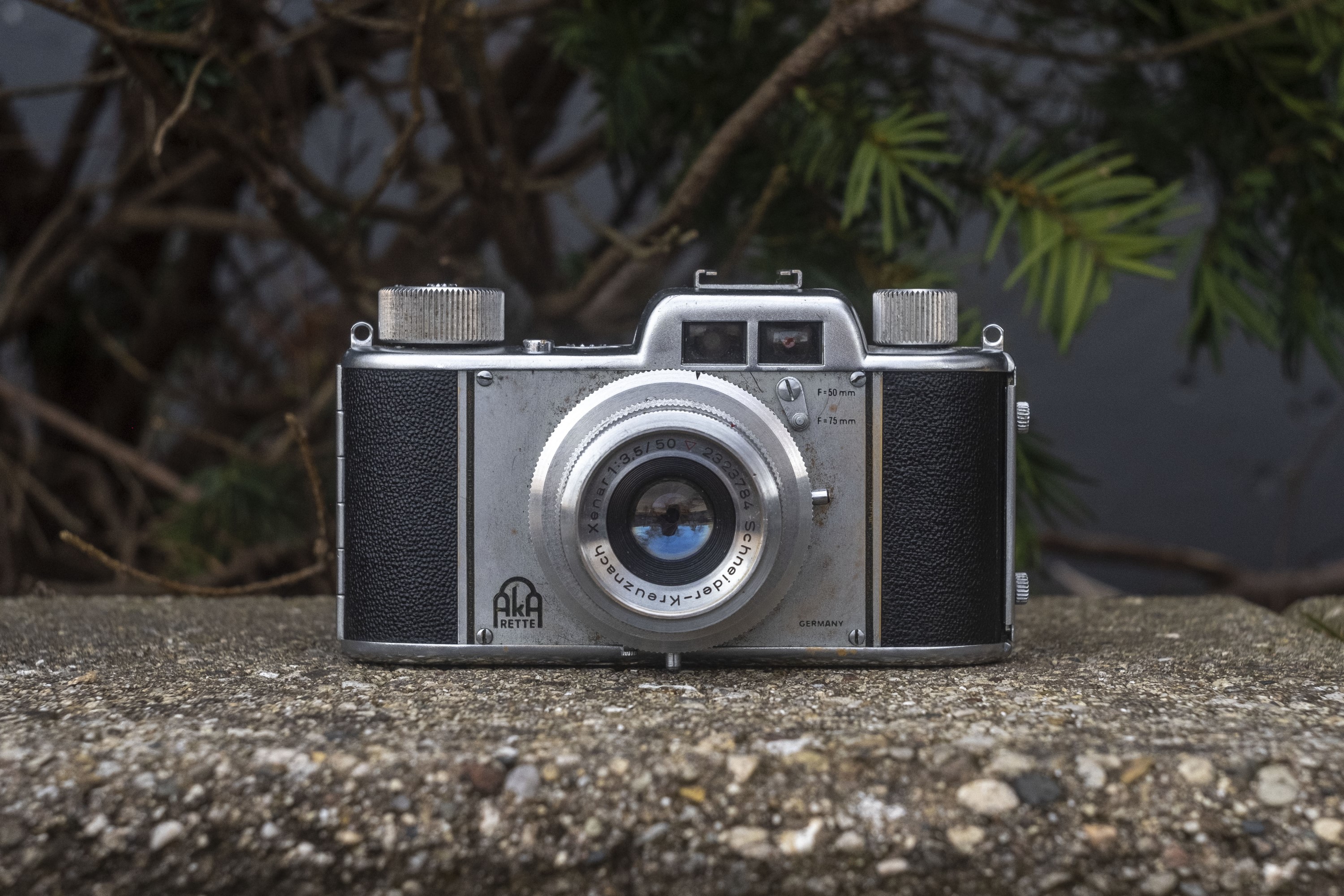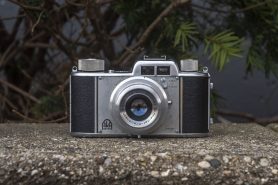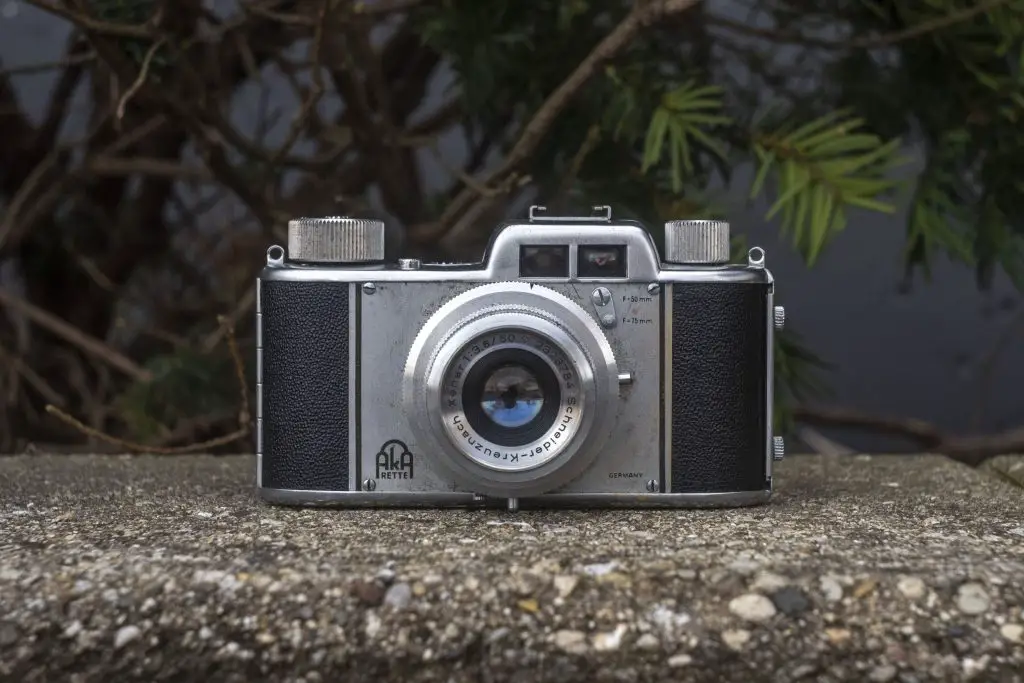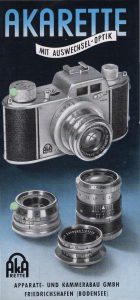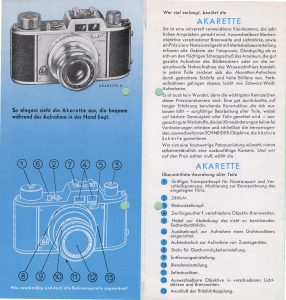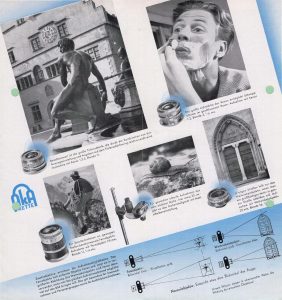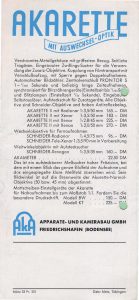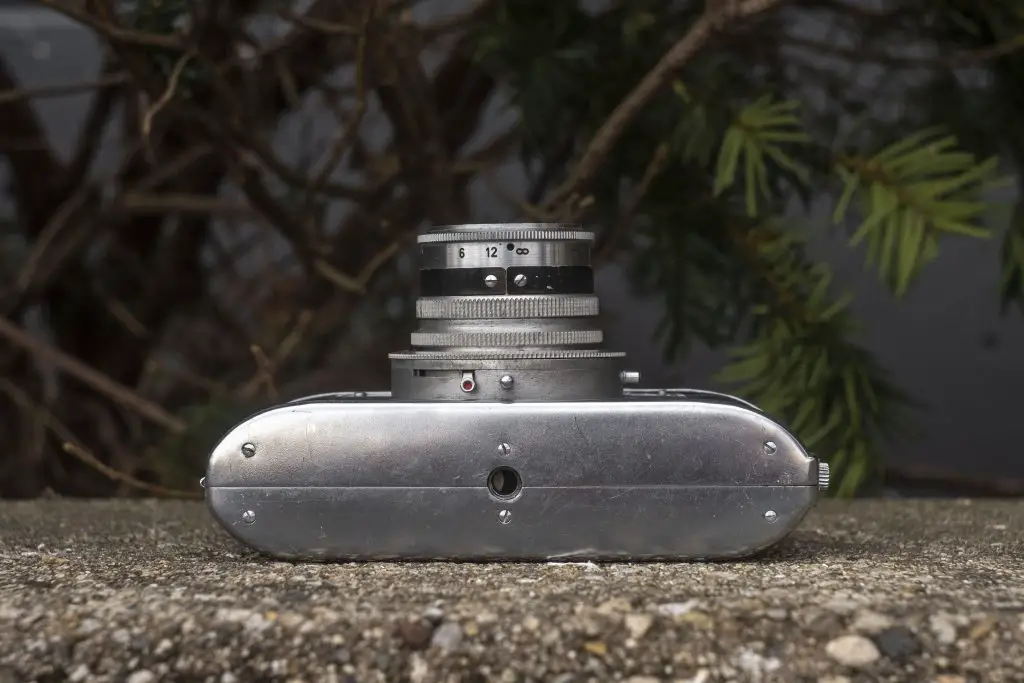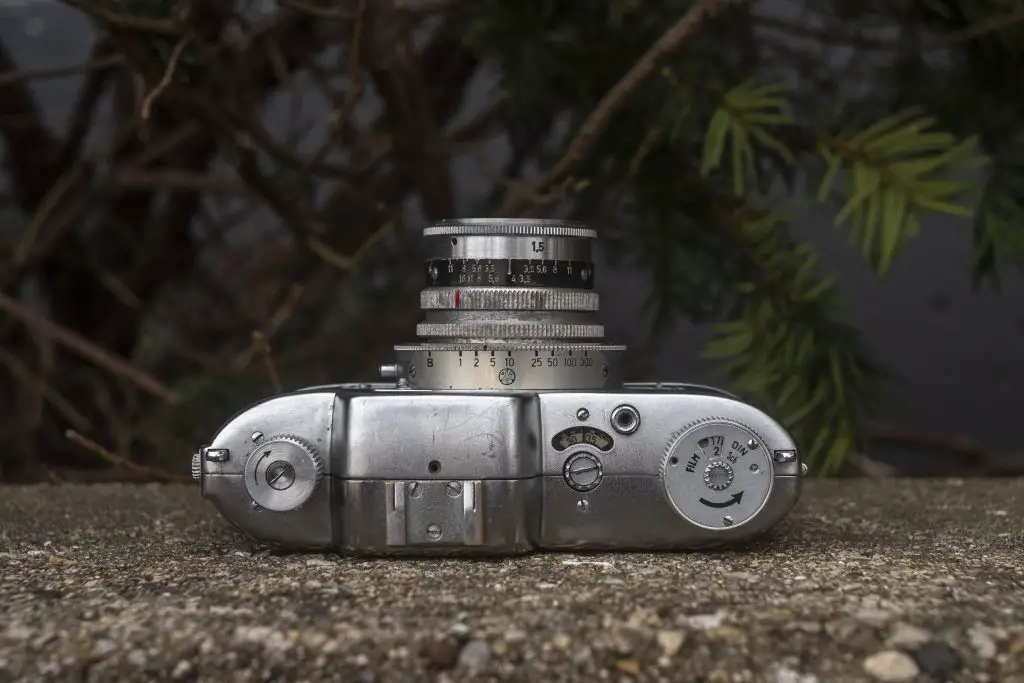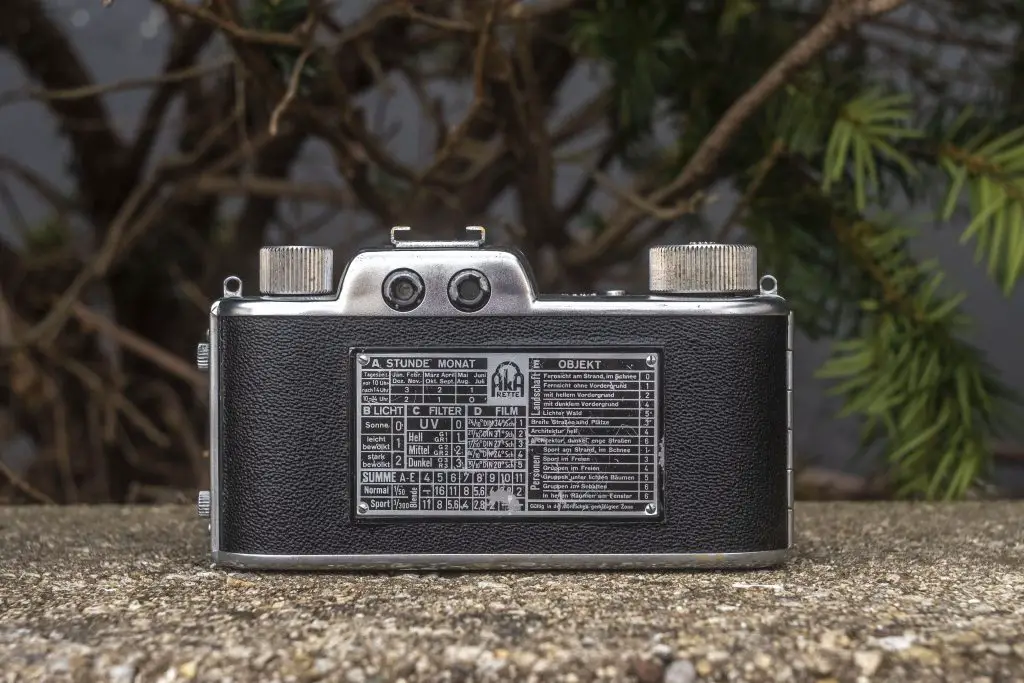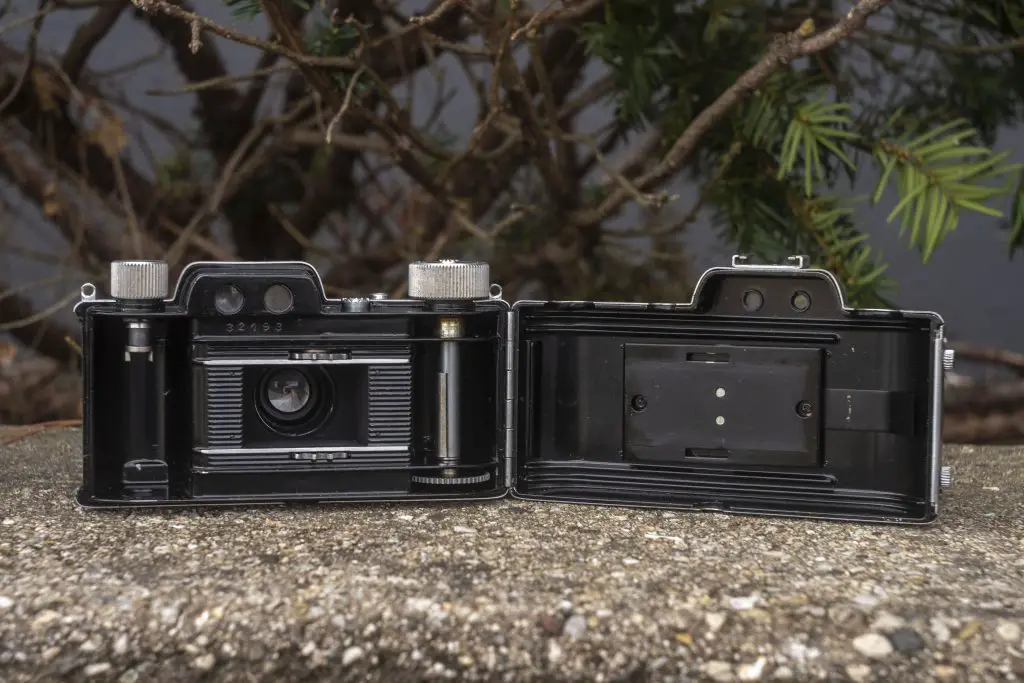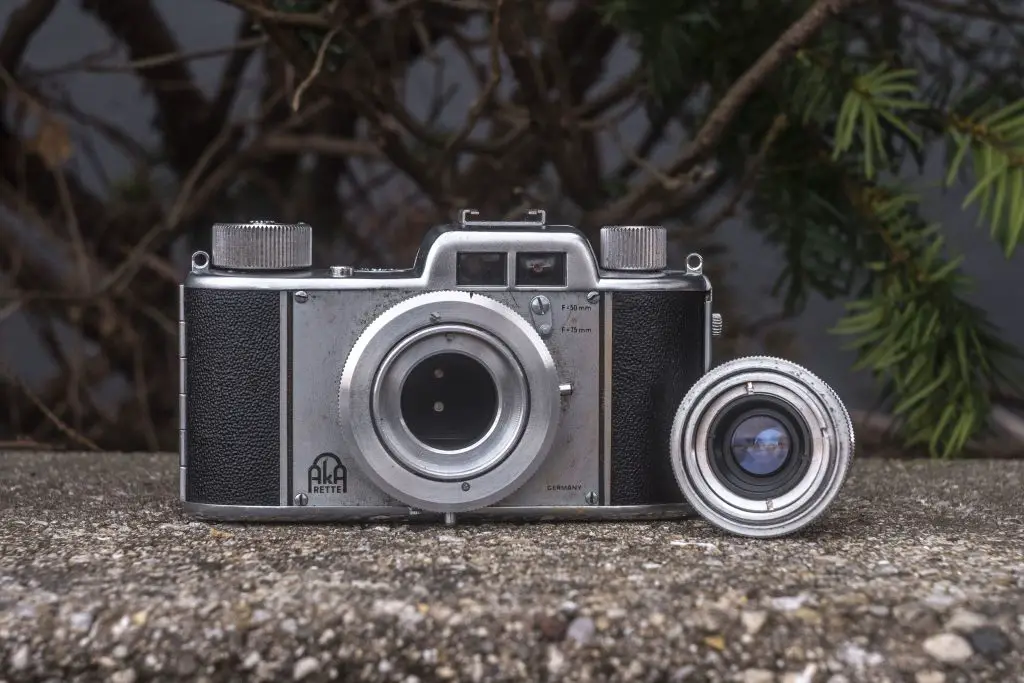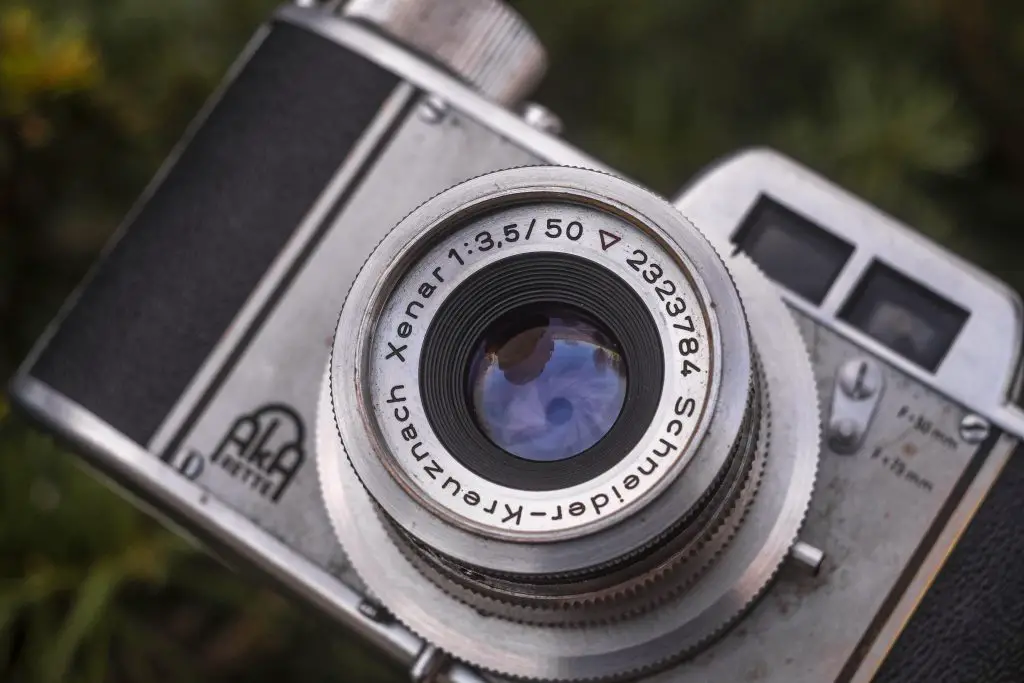 This review is part of the Cameras of the Dead series which I have been publishing every year on Halloween and “Halfway to” Halloween, featuring three cameras that I’ve wanted to review that either didn’t work, or was otherwise unable to shoot.
This review is part of the Cameras of the Dead series which I have been publishing every year on Halloween and “Halfway to” Halloween, featuring three cameras that I’ve wanted to review that either didn’t work, or was otherwise unable to shoot.
I am republishing each of those individual reviews this October in anticipation of this Halloween’s Cameras of the Dead post as a way to revisit the cameras of the past that allows them to be properly indexed on the site.
This is the Akarette II, a 35mm interchangeable lens camera made by Apparate & Kamerabau Gmbh in Friedrichshafen, Germany starting in 1950. The Akarette series consisted of a variety of simple cameras that usually came with one of several high quality Schneider lenses. A distinct feature of this camera is the two viewfinder windows are for two different focal lengths of 50mm and 75mm. The camera sold modestly as a lower cost alternative to other higher end German cameras. Apparate & Kamerabau would later make an interchangeable lens rangefinder camera called the Arakrex.
Film Type: 135 (35mm)
Lens: 50mm f/3.5 Schneider-Kreuznach Xenar coated 4-elements
Lens Mount: Aka Breech Lock Screw Mount (~38mm)
Focus: 3.5 feet to Infinity
Viewfinder: Twin Scale Focus Viewfinders, one 50mm and the other 75mm
Shutter: Prontor-SVS Leaf
Speeds: B, 1 – 1/300 seconds
Exposure Meter: None
Battery: None
Flash: Accessory Shoe with PC M, X, and FP Sync
Weight: 533 grams (w/ lens), 452 grams (body only)
Manual: https://www.cameramanuals.org/pdf_files/akarette_ii.pdf
My Thoughts
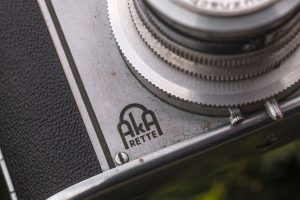
Sometimes there are those cameras that from the moment you see one, you know you need to find one and there are others that just appear. This Akarette is the latter. Showing up in a miscellaneous “box o’ junk”, the camera, was in fact, junk. Dirty, smelly, and completely inoperable. It sat in the bottom of that box for months before I even gave half a thought of cleaning it up and possibly reviewing it.
After eradicating most of the funk, I was unable to get the shutter to fire, but at least saw what seemed to be a pretty interesting camera. The Akarette was one of those aspirational models from a small company that sold cheaply, but had some features of more expensive cameras, hoping to serve as a stepping stone between a basic box camera and a professional one.
Featuring a proprietary breech lock screw mount that is incompatible with any other camera system, a capable shutter, and a selection of good Schneider lenses. Up front there are two viewfinder windows which to someone not familiar might suggest this camera has a rangefinder, which is not true. The two windows are each two separate viewfinders, one for 50mm standard lenses, and the second for the optional 75mm telephoto lens. The Akarette was a compelling option for the photographer who wanted to make good photos, but couldn’t afford a Leica or a Contax.
The Akarette was first released in 1947 and between then and 1950, a total of three versions were released all of which had similar features. The differences between the three were a combination of cosmetics, shutter upgrades, and minor features such as a film reminder dial. In 1954, the Akarette II was renamed the Akarelle and switched from a film advance knob to a lever and the telephoto viewfinder from 75mm to 90mm, but otherwise was the same camera.
In the catalog above, an Akarette II with the Schneider 50mm f/3.5 lens on the camera reviewed here, sold for 185 DM. According to the historical currency charts at fxtop.com, in 1953, 1 DM was equal to $0.24 USD so back then, it would have sold for the equivalent of $43.92. When adjusted for inflation, that compares to $417 today, making the Akarette a semi-affordable, but not cheap, camera.
The Akarette is a solid feeling camera that’s just the right size for those with small to average sized hands. Weighing 533 grams with the Schneider Xenar lens pictured here, the Akarette is weighs near the same as a Leica II with collapsible Elmar. The rounded edges on the top plate and sides make the camera very easy to hold, helping to disguise some of the camera’s weight. The top plate has from left to right, the rewind knob, accessory shoe, manually resetting exposure counter, threaded shutter release button, and combined film advance knob and film reminder, oh, and there’s strap lugs.
The bottom of the camera has a 1/4″ tripod socket and on the base of the shutter is a red tipped self-timer lever.
On the back, we see the openings for both viewfinders, and an elaborate film exposure guide written entirely in German. I do not know if English versions of this guide exist, but based on how cluttered it looks, it seems overly complicated and not something I’d likely ever use anyway.
The film compartment opens by sliding the lock on the cameras left side. Film travels from left to right onto a fixed take up spool in a rather ordinary looking film compartment. Notice that within the film compartment, beneath the viewfinder openings is the serial number.
The lens mount on the Akarette is not a traditional screw mount like the Leica. Instead, it uses a breech lock system, similar to the Leidolf Lordomat, in which the lens is mated to the camera, aligning a pin on the body with a notch on the lens, and then a threaded ring around the lens is rotated to secure the lens. The example here has a Schneider Xenar 50/3.5 lens and based on the small amount of documentation I’ve found on these cameras, it seems as though Schneider was an exclusive maker of Akarette lenses. I do not know if any other third party companies made compatible lenses, but a quick Google image search doesn’t seem to turn up any.
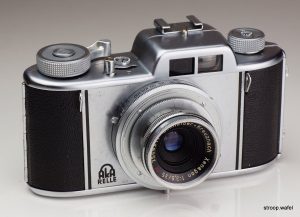
Near the 1 o’clock position around the lens is a switch for toggling between the 50mm and 75mm viewfinders. Only one viewfinder is active at a time as this lever moves a black plate with a red dot in front of whichever one you don’t have selected.
I quite like holding the Akarette and from the top down, it ever so slightly reminds me of a Streamliner motor home with it’s polished metal and soft curves.
Not having the ability to shoot this camera, I am unable to share with you any sample pics, but I found a couple of shots taken with a very similar Akarette II at my friend Mark Faulkner’s GAS Haus website, so give his site a visit and check them out. If I ever do come across a working example, I’ll be sure to write about it!
Related Posts You Might Enjoy
External Links
http://camera-wiki.org/wiki/AkArette
http://www.cjs-classic-cameras.co.uk/arette/arette.html

